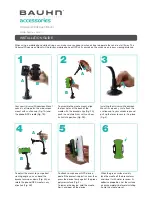
97
The M mark is intended to be
synonymous with the U mark.
The T mark is intended to
be synonymous with the UT
mark. The M and T marks are
recommended by the Alliance for
Telecommunications Industries
Solutions (ATIS). The U and UT
marks are referenced in Section
20.19 of the FCC Rules. The HAC
rating and measurement procedure
are described in the American
National Standards Institute
(ANSI) C63.19 standard.
When you're talking over the cell
phone, it's recommended you'd
turn the BT (Bluetooth) mode off
for HAC.
For information about hearing
aids and digital wireless phones
Wireless Phones and Hearing Aid
Accessibility
http://www.accesswireless.org/
hearingaid/
FCC Hearing Aid Compatibility
and Volume Control
http://www.fcc.gov/cgb/
consumerfacts/hac_wireless.html
Caution:
Avoid potential hearing
loss.
Prolonged exposure to loud
sounds (including music) is
the most common cause of
preventable hearing loss. Some
scientific research suggests that
using portable audio devices, such
as portable music players and
cellular telephones, at high volume
settings for long durations may
lead to permanent noise-induced
hearing loss. This includes the
use of headphones (including
headsets, earbuds and Bluetooth
®
or other wireless devices).
Exposure to very loud sound has
also been associated in some
studies with tinnitus (a ringing in
the ear), hypersensitivity to sound
and distorted hearing. Individual
susceptibility to noise-induced
hearing loss and other potential
hearing problems varies.
The amount of sound produced
by a portable audio device varies
depending on the nature of the
sound, the device, the device
settings and the headphones. You
should follow some commonsense
recommendations when using any
portable audio device:
















































